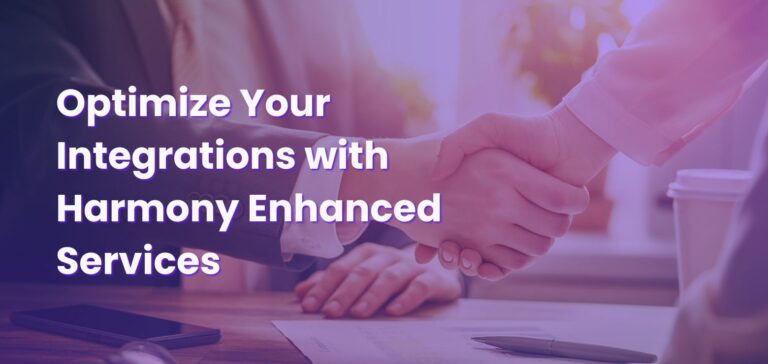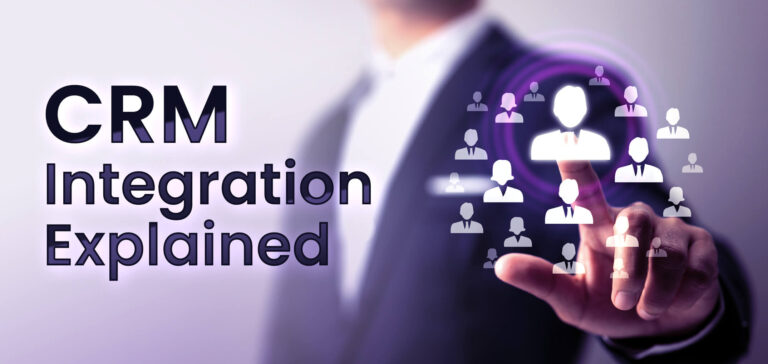By Carole Achramowicz, VP, Product Marketing
Integrating ecommerce platforms with ERP systems elevates the customer experience. So how do you do it effectively?
In the dynamic, ever-evolving ecommerce landscape, where online sales are projected to account for 21.2% of total retail sales by 2024, building a robust and agile tech stack is imperative for businesses to stay competitive and provide superior customer experiences. Among the key components of this tech stack, Enterprise Resource Planning (ERP) integration plays a pivotal role.
Connecting your ERP system to your ecommerce platform ensures that data related to sales orders, inventory, pricing, and customers is consistently updated and integrated across both systems. However, integrating these two platforms comes with its own set of distinct challenges.
Integration platform as a service (iPaaS) offers a simple, modern solution for seamlessly facilitating, orchestrating, and automating data across your ERP and ecommerce platform. Harnessing iPaaS to bridge the gap between these systems not only enhances operational efficiency, but also provides a unified framework for digital transformation.
Challenges in ecommerce ERP integration (and how iPaaS solves them)
Conventional ERP integration methods bring about various obstacles, including:
-
Application boundaries
One of the primary challenges in ERP and ecommerce integration is understanding and respecting the distinct purposes of each system. For instance, in the context of orders, ecommerce systems are tailored to handle hundreds of thousands of requests in a short period of time, a task for which ERP systems, in general, aren’t designed to handle at that scale.
Adopting an integration approach that is decoupled yet maintains data synchronization is imperative to handle this throughput mismatch between ecommerce and ERP systems. iPaaS offers the flexibility to build both real-time and batch integrations. Through the low-code UI, you can create integration processes tailored to your specific requirements, whether requiring immediate data synchronization or scheduled batch updates.
-
Diverse data structures and protocols
ERP and ecommerce systems often employ distinct data structures and communication protocols, leading to complexity with data mapping and transformation between systems.
An iPaaS simplifies data mapping with intuitive, UI-driven capabilities. iPaaS enables users to easily map data structures between ecommerce and ERP systems with a straightforward drag-and-drop interface, ensuring seamless communication.
-
Customizations
Customizations in ERP systems can complicate integrations, requiring tailored solutions.
iPaaS solutions that are designed with customization in mind provide out-of-the-box support for customization within the ERP systems, allowing users to implement integrations with custom Business APIs (BAPIs), Remote Function Calls (RFCs), and Intermediate Documents (IDOCs) without extensive expertise.
👉 Click here to explore Jitterbit’s iPaaS solution, Harmony
ERP and ecommerce integration success stories
Let’s see what ecommerce to ERP integration success looks like for two businesses who integrated their ecommerce platform, VTEX, with their SAP ERP system.
Electrolux, a global leader in home appliances, was struggling with a lack of visibility into their order carrier capacity.
Using Jitterbit’s iPaaS, Electrolux implemented a workflow process to monitor their order distribution by carrier during the integration between VTEX and SAP, resulting in a two day reduction in average delivery time, more precise resource management, significant cost savings, and improved logistics operations.
Swift, a leading international foods brand, was struggling with lengthy data integration delays that were hindering a seamless omnichannel experience for their customers.
By integrating VTEX with SAP using Jitterbit’s iPaaS, Swift enabled continuous communication between the two systems, resulting in a significant improvement in order delivery times and a drastic reduction in integration time, reducing a 20 minute process down to three minutes.
By eliminating manual errors, tracking inventory in real time, and creating a more seamless customer experience, Swift also saw a 275% increase in order volume.
The consequences of insufficient ecommerce ERP integration
When ERP and ecommerce integration methods are manual-intensive or cumbersome, it results in the following risks:
- Elevated labor costs: manual data entry, order tracking, and data reconciliation due to lack of integration consumes time and resources and introduces a higher risk of errors.
- Data discrepancies: inconsistent, outdated, or repetitive data can be found scattered across different systems.
- Operational inefficiencies: a lack of business process coordination can occur without real-time integration.
- Competitive disadvantage: the absence of quick and accurate access to customer data can impede sales staff from seizing opportunities to offer relevant products and services.
Best practices for ecommerce ERP integration
To ensure a successful and agile implementation, apply the following best practices:
-
Create a detailed implementation plan
Choosing an implementation plan that deploys the entire project at once is generally not advisable. Segment the implementation phase into well-defined phases, focusing on critical processes first, such as updating stock, processing orders, and invoicing.
-
Map data to maximize ERP and ecommerce capabilities
Quickly make ERP products available in the ecommerce storefront. Map data to ensure accurate and consistent business rules, preventing rework and delays during the implementation phase.
-
Align your implementation with your business strategy
Organize parameters within your ERP, especially for sales orders, in alignment with the sales model used by the company. Establish conversion tables for ecommerce and ERP integration in a parameterized manner.
Accelerate and simplify ecommerce ERP integration with iPaaS
Unlocking results similar to Electrolux and Swift is achievable with iPaaS. With an iPaaS solution, you can significantly reduce the cost of creating, managing, and maintaining integrations, thanks to its rapid and efficient integration capabilities.
Jitterbit’s iPaaS minimizes time to revenue and accelerates digital transformation by providing a user-friendly, low-code platform to connect systems and automate workflows.







